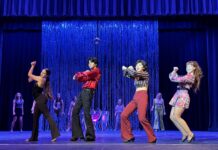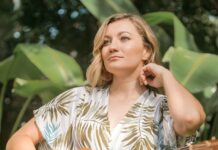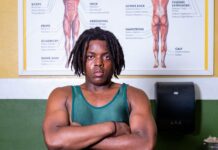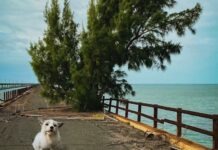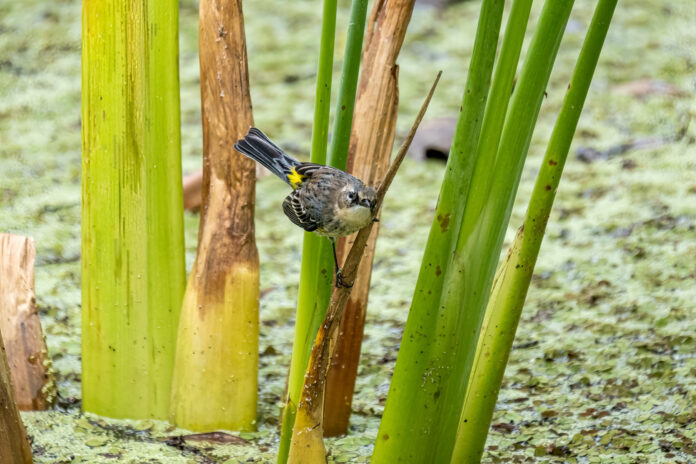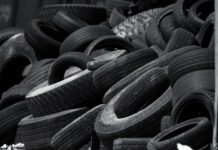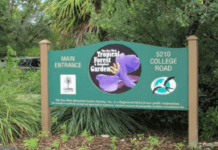Back in the day, you could show your chops as a birder by distinguishing between a Myrtle warbler and an Audubon’s warbler. They were very similar-looking birds. The male Myrtle warbler, which bred largely in the east, was distinguished by a white throat and two wingbars. The male Audubon’s warbler, which bred largely in the west, had a yellow throat and a white wing patch that kind of filled in the zone between what would be the wingbars on the Myrtle. The females’ came down to the throat, with the Myrtle having a white throat, and the Audubon having a yellow throat.
The males were predominantly a slaty blue, and the females a watery brown — at least in summer. In winter, they all morphed into the same watery brown – females, males and juveniles, though on males you can occasionally pick up a tinge of blue. If you could parse the distinctions in the winter you were really good.
What all these birds had in common, field mark-wise, was big yellow patches under their wingpits, and a big, bright, yellow spot on their rump. Young, old, male, female, Audubon’s and Myrtle – they all had it.
Then, in 1973, it was decided that Myrtle warblers and Audubon’s warblers were more similar than different, especially as they interbred in the Canadian Rockies, and were lumped into a single species called the yellow-rumped warbler. The need to make such fine-toothed distinctions faded away. Once you saw that sunshine-hued hind end, or those saffron-shaded wingpits, you could tick them off on the checklist. (The slang term for them is butter butts, because that yellow spot on their rump is a bit reminiscent of a pat of butter just dropped onto a grill.)
You will, on occasion, hear the old timers, or the ambitious young timers, call them out as Myrtle’s or Audubon, just to keep you on your toes. As someone who didn’t really start birding until the late 1990s, my toes often fail me in this regard.
Most winters, we get a few yellow-rumps in the Keys, but this winter, we’ve been seemingly overrun with them. They have been giving palm warblers, the most common songbird we see in the winter, a run for the ubiquity prize.
It’s been nice to have a little more variety in the birdscape, but it’s been a little frustrating. I’ve gone out a number of times around Key West trying to get a decent picture of one, and have failed over and over again.
I’d say this is the limitations of my camera, but it’s a poor carpenter who blames his tools.
So I’m going to blame the yellow-rumps. They’ve been too quick moving, too deep in the bushes or too high in the trees. Or they only come out into the open in the worst backlit light, or just as the battery dies on my camera. Or as the person walking their dog and talking on their
phone comes down the path behind me. I don’t know the exact biological mechanisms for how they go about conspiring against me, but I have no doubt that they, collectively, have done me wrong. It’s the only explanation for how many of them have been around and how few of them have given me a decent pose.
Kevin Christman was expressing similar sentiments about yellow-rumps a few weeks ago, but then he caught some decent frames of them coming into his bird bath. (Which is fine, if you can overlook the fact that feeder and bird bath photos are cheating.)
Why are there so many yellow-rumps in the Keys this winter, as opposed to other winters?
Most of the bird species we get here in winter are obligate migrants, meaning as a species they tend to completely abandon their breeding grounds. It’s thought this is generally motivated by a hormonal change triggered by a shifting photoperiod, a.k.a. length of day. Basically, obligate migrants migrate out of genetic habit.
Yellow-rumped warblers are considered facultative migrants, meaning they only migrate in response to environmental conditions, most often food scarcity. And they generally don’t migrate as a species, but as individuals. It just seems that this year, something drove a lot of them to make the same decision.
Seeing so many, even if I was failing at photographing them, I started to get the urge to parse them beyond species, maybe down to age and gender.
The Sibley Field Guide to Birds rarely lets me down, but on this occasion it did. Of the 15 images on the yellow-rumped warbler page, none of them depict adult yellow-rumps in winter plumage, or how they look for the half a year they spend in Florida. I blame this on a northern bias in the content. Also on the lack of space on a page. It did note in the small print text that winter birds have an “overall brownish color.”
In order to find a good, systematic understanding of what the various types of yellow-rumped warblers looked like in their winter plumage, I ended up going to the Cornell Lab of Ornithology’s Birds of the World website (subscription-based), which had good clear images of all the aforementioned variations. And I did come away with one further bit of clarity – that I am probably never going to be good at parsing gender, age, or Audubon’s vs. Myrtle in the field. Or at least not any time soon.
I’d kind of taken a break from going out to try and get a good shot of them, too. But when I was up on the mainland a few weeks ago, I made a stop at Audubon’s Corkscrew Swamp Sanctuary, because I hadn’t been there for a while, and because it was one of the first places I fell in love with this whole birdwatching thing.
I can’t say it was a great day for birds up there, but it’s never bad. I saw some painted buntings and some pileated woodpeckers, as well as a few alligators and the rear end of a swimming otter. And there were yellow-rumps everywhere. Mostly they were high up in the canopy. But then I started noticing a few of them flitting around down low, around the cypress knees, and I managed to lift my camera and get a few decent shots of them in focus and in frame.
I’m going to keep trying to get a decent shot of a yellow-rump in the Keys, but catching those few frames was a nice way to give that itch a little scratch.







